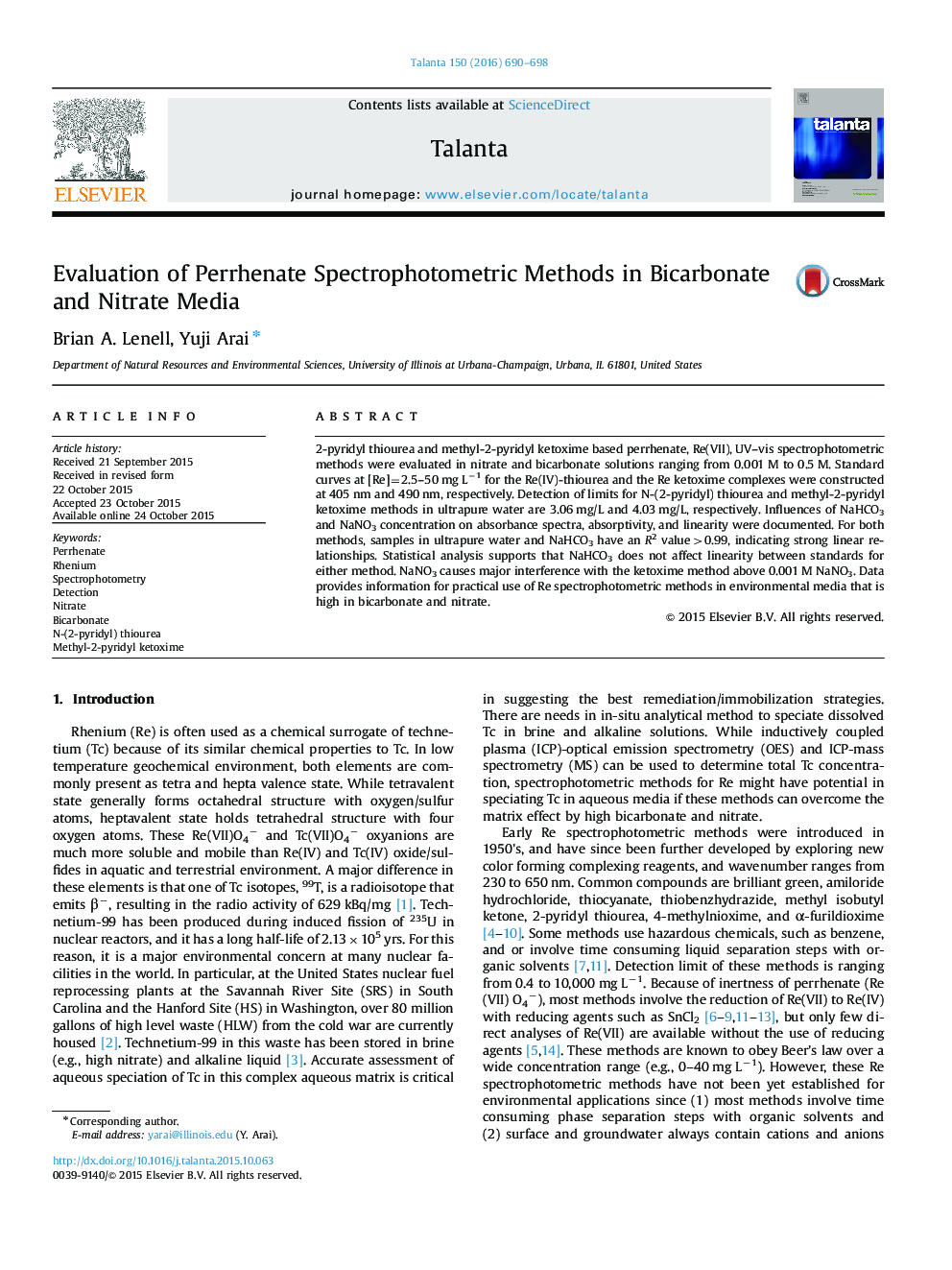| Article ID | Journal | Published Year | Pages | File Type |
|---|---|---|---|---|
| 1242223 | Talanta | 2016 | 9 Pages |
•2-pyridyl thourea and methyl-2-pyridyl ketoxime based Re(VII) spectrophotometric methods were evaluated.•0.001-0.5M bicarbonate did not interfere with Re detection by both methods.•Nitrate (>0.001 M) causes interference with the ketoxime based method.
2-pyridyl thiourea and methyl-2-pyridyl ketoxime based perrhenate, Re(VII), UV–vis spectrophotometric methods were evaluated in nitrate and bicarbonate solutions ranging from 0.001 M to 0.5 M. Standard curves at [Re]=2.5–50 mg L−1 for the Re(IV)-thiourea and the Re ketoxime complexes were constructed at 405 nm and 490 nm, respectively. Detection of limits for N-(2-pyridyl) thiourea and methyl-2-pyridyl ketoxime methods in ultrapure water are 3.06 mg/L and 4.03 mg/L, respectively. Influences of NaHCO3 and NaNO3 concentration on absorbance spectra, absorptivity, and linearity were documented. For both methods, samples in ultrapure water and NaHCO3 have an R2 value>0.99, indicating strong linear relationships. Statistical analysis supports that NaHCO3 does not affect linearity between standards for either method. NaNO3 causes major interference with the ketoxime method above 0.001 M NaNO3. Data provides information for practical use of Re spectrophotometric methods in environmental media that is high in bicarbonate and nitrate.
Graphical abstractFigure optionsDownload full-size imageDownload as PowerPoint slide
